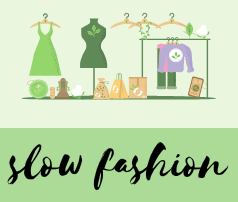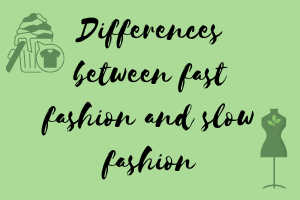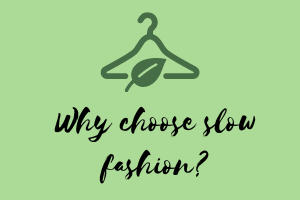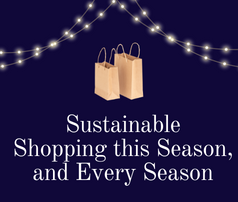 Green Benefits
Green Benefits
Sustainable Shopping this Season, and Every Season
The Holidays are upon us. Twinkly lights, Holiday music, the Nutcracker ballet, peppermint mocha, and gift shopping..lots and lots of gift shopping. We buy all kinds of gifts for the Holidays…electronics, jewelry, music, shoes, toys, clothing and much more. And for the average buyer, not much thought is put into where these items were made and how the environment was affected by their purchase, and what kind of quality of life the workers who made this item have. For the purpose of focusing on what we know best, textiles, we would like to encourage you, dear follower, to think about these questions as you make purchases of textiles this Holiday season, and every season. When purchasing clothing items for Christmas or Hanukkah or Kwanzaa or any other occasion, there are many ways you can think about and look into sustainable options, which support the worker and the environment. What does it mean to shop sustainably?
“Sustainability means maintaining an ecological balance by avoiding the depletion of natural resources. But sustainability is commonly extended to social systems—ensuring they promote the well being of all the individuals and communities affected. Sustainability also speaks to longevity – environmental, social and economic systems and industries need to be designed in a way that means they are in balance and can be maintained well into the future. So sustainable fashion is simply about fostering a fashion industry that takes a long term approach to the design, manufacturing, and consumption of clothes and accessories. It’s about fashion that both creates good and avoids harm, whether to people, the planet or animals.” (Found here)
What to Look For
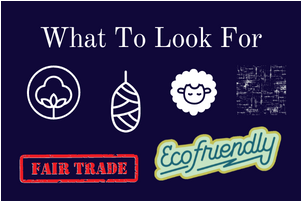
What can a consumer look for in their purchases to help ensure that the clothing is as sustainable as possible?
Fabric Choice
The first consideration when shopping sustainably is paying attention to fabric choice. Not all fabrics are equal when it comes to sustainability. Whereas “silk, hemp, linen, and wool are all natural, low-impact textiles” (found here), certain fabrics are made from plastic fibers and release plastic microfibers during the washing process which eventually end up polluting our bodies of water. The best fabrics to choose as sustainable options are “cotton, linen, silk, wool, hemp, etc. — which will last the longest in your closet. Specifically, silk was found to be the longest-lasting fabric in terms of how long it remained in use, with wool in second place.” (found here) These choices are more beneficial at their end of life also because “when they do wear out, natural fabrics are biodegradable and recyclable.” (found Here) At times, we will need to purchase other pieces that don’t fall into one of these fabric choices, such as for a bathing suit. “If you must buy polyester or another synthetic fiber, look for polyester that’s made of recycled water bottles, fishing nets, carpet, and other post-consumer products.” (Found here)
Eco Certifications
The second consideration when shopping sustainably is checking for different eco certifications on the items for purchase or companies selling them. Here are a few certifications you can look for when shopping sustainably:
- “OEKO-TEX is an independent test and certification system for textiles, and it offers multiple levels of certification, the most basic of which indicates that the product is free of hazardous chemicals.” (Found here)
- “Fair Trade certification indicates that the factory workers are paid at least the minimum wage, and that the working conditions are safe.” (Found here)
- “B-Corp is a general seal of approval for brands that have proven their commitment to sustainability and transparency.” (Found here)
- “Better Cotton Initiative (BCI), which bills itself as the largest cotton sustainability programme in the world, reduces the impact of cotton farming and improves the livelihoods of farmers and their families.” (Found here)
In addition to these certifications and programs, there are also a few apps and web browser extensions that can assist you in your search to shop sustainably. One of these is Good on You. “The Good on You app lets you search for a brand’s environmental impact, labor policies, and even animal-friendly considerations, plus makes recommendations in different categories (dresses, hosiery, outerwear) of sustainable and ethical brands.” (Found Here) When shopping this Holiday season, take your time and check out some of these important certifications and sustainable apps to assist you in your gift hunting.
Durable and Versatile
A third consideration when shopping sustainably is finding textile pieces that are created to last – those that are durable – and pieces that can pair with multiple items in your wardrobe – those that are versatile. Sustainable companies take more care with the pieces they create, making products that are made of quality fabric and made to last across years.
When shopping sustainably looks like buying less clothing, it’s important to carefully choose those items that can benefit your wardrobe and pair with multiple pieces you already own. A year ago we shared a blog about choosing consciously and highlighted the idea of a capsule wardrobe, which involves paring down your closet to primarily pieces with a timeless style that can pair with multiple items you own. Capsule wardrobes mostly involve vintage, secondhand and sustainable pieces.
Other Ways to Shop Sustainably
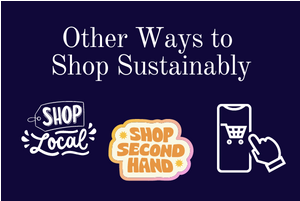
In addition to what to look for in shopping from sustainable companies, here are a few more ideas on ways you can shop to show care for the environment and the workers involved.
Buy Secondhand
A few years ago we posted an article about shopping secondhand during the Holiday season. With the ability to find rare and vintage items by shopping resale for gift giving, loved ones can receive gifts that are one of a kind. Shopping secondhand is another sustainable option as you are giving a second life to items that have already been made, and not adding to the environmental effects of creating something new.
Buy Local
“Staying local is the key to sustainable shopping.” (Found here) Buying locally involves less of a footprint made by using gas to go from here to there, and can also benefit local artisans and mom and pop stores that may focus more on quality and sustainability.
Buy Online
In addition, some articles referenced in this blog have shown that shopping online can reduce your environmental footprint by combining numerous products in one delivery truck vs multiple cars driving to and from stores to shop around. When internet shopping is available, remember to look into the certifications and app or web extension browsers that can help you find companies that are sustainable.
The Holiday Season

We hope as you begin your Holiday shopping that this blog will help educate you, our readers, on the myriad of ways you can shop sustainably this season, and in every season. For more ideas, check out some of the articles we referenced above. Here at Chicago Textile Recycling, we wish everyone a warm and happy Holiday season and a Happy 2023.
